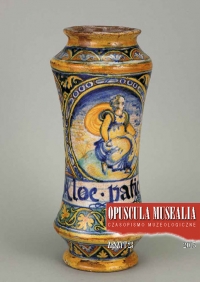Badania zapraw i bieli w warstwach malarskich w dziełach artystów dworskich króla Jana III Sobieskiego za pomocą rentgenowskiej dyfraktometrii proszkowej (XRDP)
XRPD investigations of ground layers in easel paintings
Author(s): Alicja Rafalska-Łasocha, Katarzyna Luberda-Durnaś, Elżbieta Modzelewska, Agnieszka Pawlak, Wiesław ŁasochaSubject(s): Museology & Heritage Studies, Visual Arts, Recent History (1900 till today), 17th Century, 18th Century
Published by: Wydawnictwo Uniwersytetu Jagiellońskiego
Keywords: conservation science; X-ray powder diff ractometry (XRPD); analysis of ground layer; king Jan III;
Summary/Abstract: In recent years, curators and conservators from the Museum of King Jan III’s Palace in Wilanow, have begun a multi-pronged study on the works of artists from the royal court. The research started with the paintings of Michelangelo Palloni. At the same time, a project has been launched with the aim of bringing together comparative materials to explore and catalogue differences in technique and technology in the unsigned portraits of King Jan III and his family; portraits most likely painted during the king’s lifetime. The aim of the presented study is the comparison of characteristic features of certain workshops, and an attempt to assign certain works to the appropriate workshop. XRDP was one of the test methods used in this study. This technique has enabled confirmation and in some cases, clarification of the test results performed previously with the use of other techniques. The aim of the XRPD experiments were to determine the composition of ground layers, the qualitative comparison of the composition of ground layers in different paintings, and sometimes the white pigments in the paintings on canvases. In the future we also want to perform quantitative analyses to determine the proportions of the individual components of the ground layer, and the white pigments in various paintings of artists from the royal court. The subjects of this study were five easel paintings created in the late 17th and early 18th centuries. The paintings are attributed to foreign painters working for King Jan III Sobieski: Portrait of Jan Dobrogost Krasiński by Michelangelo Palloni, Portrait of Henri Albert de la Grange d’Arquien (the father of Queen Maria Kazimiera), attributed to the foreign painter Alexandre-François Desportes, who worked for King Jan III, and Portrait of King Jan III, probably from the late 17th century, referred to as a ‘private portrait’ attributed to an unknown Italian artist. We also have investigated two paintings: The Suffering Christ, one from Torun, another one from Czestochowa. The XRPD measurements were performed from powder samples at the Faculty of Chemistry, in Jagiellonian University, with the use of an X’Pert PRO MPD diff ractometer, CuKα radiation, 40kV and 30 mA and a PIXCEL PSD detector. The phase analysis was performed with the use of the PDF4+ database.
Journal: Opuscula Musealia
- Issue Year: 2015
- Issue No: 23
- Page Range: 9-20
- Page Count: 12
- Language: Polish

